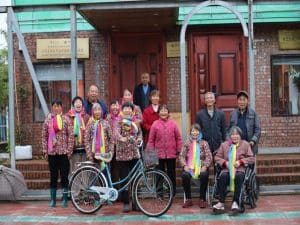More than 2 billion people in 167 countries and regions are severely affected by desertification. To fight desertification, an afforestation campaign is underway in the Kubuqi Desert, Inner Mongolia. With 30 years of effort, the campaign has covered 6,000 square kilometres of land. Now, 53 percent of the land is covered with plants.
The Chinese government has stated the Kubuqi Desert has provided an example for the international community to implement the UN’s 2030 Agenda for Sustainable Development.
The Kubuqi Desert lies at the intersection of the northern Ordos Plateau and the Hetao Plain. Overgrazing and farming had made the land barren and desolate. As Gao Eryun from Guan Jing Village, Ordos City, explained, “When I was a child, sometimes the sand almost buried the house.”
But ecological restoration has reinvigorated economic growth for those who work the land. “Now, more than 120 square kilometers of sand willows have been planted in the village. The environment has improved, and our income has increased. My family has planted 100,000 square meters of corn, raised more than 120 sheep, and sold sand willow seed strips, which generated a net income of more than 200,000 RMB (USD) a year. ”
According to Huang Feng, leader of the Rural Revitalization Research Project at Tsinghua University, “the Kubuqi desertification control strategies focus on utilising market forces to generate business opportunities. The industries that arise then help reinforce desertification control, which leads to significant results.”
More than 6,000 people have followed leading enterprises to engage in ecological protection and restoration industries across China.
The 13th United Nations Convention to Combat Desertification released a review of the Kubuqi Ecological Restoration Project. The assessment report showed that over the past three decades, the initiative has improved more than 6,000 square kilometres of land, captured 15.4 million tons of carbon, and created more than 500 billion RMB of ecological wealth.



